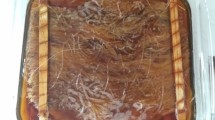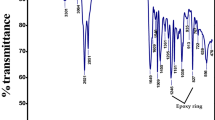Abstract
Environmentally, biodegradable natural fiber plays a vital role in polymer composite fabrication due to its cost-effectiveness, reduced specific weight, and specific stiffness behavior. Besides, the research gap spotted on processing challenges, including lack of adhesive behavior, results in lower mechanical behavior of composite. The main objective of the present research is synthesizing of epoxy-based poly composite enclosures with 5% sodium hydroxide processed natural sisal fiber (SF) as 20 vol% via thermally assisted injection mold route, which functional behavior is enriched by the accumulations of 3, 6, and 9 vol% of nanosilicon carbide particles (SiC). The impacts of processing accumulations of nano-SiC/SF on metallurgical (scanning electron microscope (SEM)) and mechanical functional properties including tensile strength, elongation percentage, flexural strength, and fracture toughness of epoxy/NaOH-treated natural SF and its composites embedded with nano-SiC are studied. The novel research is recorded with the exposure of SEM metallurgical analysis results, and better SF distribution along the epoxy matrix with a coarse grain of nano-SiC is identified on hybrid compositions. Amid the various compositions mentioned above, the epoxy/20 vol% SF (NaOH treated)/6 vol% nano-SiC composite has superior tensile strength, better elongation percentage, improved flexural strength, and good fracture toughness of 54 ± 1.5 MPa, 18 ± 1%, 76 ± 2 MPa, and 1.61 ± 0.04 MPam0.5, which is greater than the value of epoxy/20 vol% SF (NaOH treated) composite sample.







Similar content being viewed by others
Data availability
All the data required are available within the manuscript.
References
Venkatesh R, Roopashree R, Sur S et al (2023) Investigation and performance study of hibiscus sabdariffa bast fiber-reinforced HDPE composite enhanced by silica nanoparticles derived from agricultural residues. Fibers Polym 24:2155–2164. https://doi.org/10.1007/s12221-023-00221-9
Venkatesh R, Raguvaran R, Murugan A et al (2023) Evaluation of thermal adsorption and mechanical behaviour of intralaminar jute/sisal/e-glass fibre-bonded epoxy hybrid composite as an insulator. Adsorp Sci Technol 2023. https://doi.org/10.1155/2023/9222562
Sanjay MR, Madhu P, Jawaid M, Senthamaraikannan P, Senthil S, Pradeep S (2018) Characterization and properties of natural fiber polymer composites: a comprehensive review. J Clean Prod 172:566–581
Nurazzi NM et al (2021) A review on the mechanical performance of hybrid natural fiber polymer composites for structural applications. Polymers 13(13):2170
Jahan F, Soni M (2021) Effects of chemical treatment on mechanical properties of various natural fiber reinforced composite: a review. Mater Today Proc 46(15):6708–6711
Elsheikh AH, Panchal H, Shanmugam S, Muthuramalingam T, Kassas AME, Ramesh B (2022) Recent progresses in wood-plastic composites: pre-processing treatments, manufacturing techniques, recyclability and eco-friendly assessment. Clean Eng Technol 8:100450
Chohan JS, Boparai KS, Singh R, Hashmi MSJ (2022) Manufacturing techniques and applications of polymer matrix composites: a brief review. Adv Mater Process Technol 8(1):884–894
Petrucci R et al (2015) Tensile and fatigue characterization of textile cotton waste/polypropylene laminates. Compos part B Eng 81:84–90
Khalid MY, Arif ZU, Ahmed W, Arshad H (2022) Recent trends in recycling and reusing techniques of different plastic polymers and their composite materials. Sustain Mater Technol 31:e00382
Kumar MD, Jayasrinivasan S, Ashwin S (2021) Study on static and dynamic behavior of jute/sisal fiber reinforced epoxy composites. Mater Today Proceed 46(19):9425–9428
Arumugam S et al (2020) Investigations on the mechanical properties of glass fiber/sisal fiber/chitosan reinforced hybrid polymer sandwich composite scaffolds for bone fracture fixation applications. Polymers 12(7):1501
Getu D, Nallamothu RB, Masresha M, Nallamothu SK, Nallamothu AK (2021) Production and characterization of bamboo and sisal fiber reinforced hybrid composite for interior automotive body application. Mater Today Proceed 38(5):2853–2860
James JD, Manokaran S, Saikrishnan G, Arjun S (2020) Influence of bagasse/sisal fibre stacking sequence on the mechanical characteristics of hybrid-epoxy composites. J Natural Fibers 17(10):1497–1507
Yorseng K, Rangappa SM, Pulikkalparambil H, Siengchin S, Parameswarapillai J (2020) Accelerated weathering studies of kenaf/sisal fiber fabric reinforced fully biobased hybrid bioepoxy composites for semi-structural applications: morphology, thermo-mechanical, water absorption behaviour and surface hydrophobicity. Constr Build Mater 235:117464
Kumar SS, Raja VM, Chakravarthy CN, Muthalagu R (2021) Determination of mechanical properties and characterization of alkali-treated sugarcane bagasse, pineapple leaf and sisal fibers reinforced hybrid polyester composites for various applications. Fiber Polym 22:1675–1683
Sasikumar R, Prabagaran S, Venkatesh R et al (2023) Effect of tamarind fruit fiber contribution in epoxy resin composites as biodegradable nature: characterization and property evaluation. Biomass Conv Bioref. https://doi.org/10.1007/s13399-023-04465-6
Adin H, Adin MS (2022) Effect of particles on tensile and bending properties of jute epoxy composites. Material Testing 64(3):401–411. https://doi.org/10.1515/mt-2021-2038
Nagappan S, Subramani SP, Palaniappan SK, Mylsamy B (2022) Impact of alkali treatment and fiber length on mechanical properties of new agro waste Lagenaria siceraria fiber reinforced epoxy composites. J Natural Fibers 19(13):6853–7664
Jagadeesan R, Suyambulingam I, Divakaran D, Siengchin S (2023) Novel sesame oil cake biomass waste derived cellulose micro-fillers reinforced with basalt/banana fibre-based hybrid polymeric composite for lightweight applications. Biomass Convers Biorefin 13:4443–4458
Zhou XY et al (2023) Bounds of mechanical properties of fiber-reinforced polymer composites with hybrid random and interval uncertainties. Thin-walled struct 182(part A):110158
Sena VSV et al (2022) Industrial cutting waste granite dust reinforced cardanol benzoxazine/epoxy resin hybrid composites for high-voltage electrical insulation applications. Polym Adv Technol 34(2):568–577
Kaushik D, Gairola S, Varikkadinmel B, Singh I (2022) Static and dynamic mechanical behavior of intra-hybrid jute/sisal and flax/kenaf reinforced polypropylene composites. Polym Compos 44(1):515–523
Fitriani F, Bilad MR, Aprilia S, Arahman N (2023) Biodegradable hybrid polymer film for packaging: a review. J Natural Fibers 20(1):2159606
Venkatesh R, Raja Sekaran P et al (2022) Adsorption and photocatalytic degradation properties of bimetallic Ag/MgO/biochar nanocomposites. Adsorp Sci Technol 2022. https://doi.org/10.1155/2022/3631584
Sekaran PR, Ramakrishnan H, Venkatesh R et al (2023) Mechanical and physical characterization studies of nano ceramic reinforced Al–Mg hybrid nanocomposites. SILICON 15:4555–4567
Funding
This project was supported by Researchers Supporting Project number (RSP2024R5) King Saud University, Riyadh, Saudi Arabia.
Author information
Authors and Affiliations
Contributions
Mariappan Kanaga Vijaya Karthikeyan: investigation, methodology, writing—review and editing. Logesh Kamaraj: conceptualization, formal analysis, writing—review and editing. Senguttuvan Kavipriya: conceptualization and formal analysis. Venkatesh Rathinavelu: writing—original draft. Dinesh Kumar Sadagopan: conceptualization, writing—review and editing. Manzoore Elahi M. Soudagar: writing—review and editing. Sami Al Obaid: review and editing. Sulaiman Ali Alharbi: formal analysis and writing. Pethuraj Manickaraj: writing—review and editing.
Corresponding author
Ethics declarations
Ethics approval
This is an observational study. Investigation and chemical processing effect of sisal fiber epoxy composite characteristic enhancement with nano-SiC via injection mold: the Research Ethics Committee has confirmed that no ethical approval is required.
Consent to participate
Informed consent was obtained from all individual authors included in the study.
Consent for publication
We give our consent for the publication of the Investigation and chemical processing effect of sisal fiber epoxy composite characteristic enhancement with nano-SiC via injection mold to be published in the International Journal of Advanced Manufacturing Technology Journal.
Competing interests
The authors declare no competing interests.
Additional information
Publisher's Note
Springer Nature remains neutral with regard to jurisdictional claims in published maps and institutional affiliations.
Rights and permissions
Springer Nature or its licensor (e.g. a society or other partner) holds exclusive rights to this article under a publishing agreement with the author(s) or other rightsholder(s); author self-archiving of the accepted manuscript version of this article is solely governed by the terms of such publishing agreement and applicable law.
About this article
Cite this article
Karthikeyan, M.K.V., Kamaraj, L., Kavipriya, S. et al. Investigation and chemical processing effect of sisal fiber epoxy composite characteristic enhancement with nano-SiC via injection mold. Int J Adv Manuf Technol 132, 2209–2216 (2024). https://doi.org/10.1007/s00170-024-13516-9
Received:
Accepted:
Published:
Issue Date:
DOI: https://doi.org/10.1007/s00170-024-13516-9




